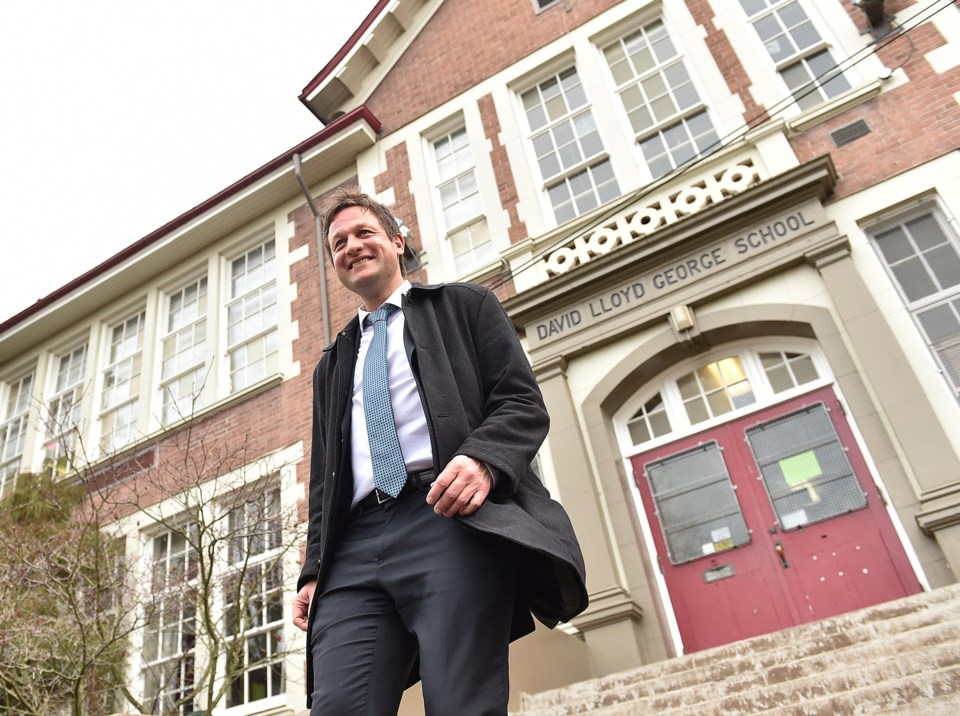The NDP government doesn’t want to be associated with school closures — that’s clear from a letter Education Minister Rob Fleming sent to all boards April 12.
What isn’t exactly clear is what they’re prepared to do about it.
In March, David Green, Vancouver School Board’s secretary-treasurer, said the province would only fund seismic upgrades for the number of students actually attending schools in the district and that it is not approving new schools or expansions in Vancouver either.
VSB says it has more than 10,000 empty seats in its schools, a number projected to grow in the next eight years to 12,000 or even 17,000 if new schools are built in high-growth areas. That excess room is mostly found in old, dilapidated schools that are not safe if an earthquake hits and that need millions of dollars in maintenance.
The provincial rule that it would only pay for upgrades for the number of students in schools left the VSB with tough decisions to make about closing schools.
In February, it released a draft plan for its $7.6 billion in lands and buildings that analyzed what would happen if up to 28 different schools in the district were to close.
But on Friday, Fleming wrote to all school board’s in the province, saying the government is focused on building and expanding schools, not on closing them and is moving twice as fast on seismic investments than the previous government.
“The old government presided over mass school closures and cuts to education funding and used the LRFP to overemphasize ‘capacity utilization’ as a means to force those closures,” Fleming said in a statement. “We are changing the guidelines… to give boards more flexibility to lay out a wide-ranging vision for their districts.”
Calling it a “new approach” and a “significant revision” to rules set up by the previous Liberal government, Fleming’s letter says the government will no longer need to approve a district’s plan, nor will it use the plan to justify funding requests.
“The changes to the LRFP guidelines are meant to give boards the flexibility and space to lay out a wide-ranging vision for their districts, rather than a rigid and prescriptive process,” the letter says. Such plans should have a “much broader focus than just enrolment and capacity utilization.”
When asked if the ministry will now pay for new schools and school expansions even if a district overall has low capacity, the ministry replied that it wants to see “robust public consultation, including with First Nations,” and that it wants boards to consider alternative uses — such as childcare? — for school spaces.
“Our goal is to get students into safe schools as soon as possible,” the ministry said in an emailed response.
The response doesn’t exactly answer the question.
On Monday, VSB chairwoman Janet Fraser said she was still trying to figure out exactly what the letter and new guidelines mean for the VSB.
“Staff are reviewing the guidelines and will bring preliminary information to our Facilities Planning Committee meeting this Wednesday, including potential timeline changes for the current draft LRFP,” Fraser said in an email.
Shaun Kalley, chair of Vancouver District Parents Association (DPAC) and father of a daughter in Grade 7 at Charles Dickens elementary, said he’s “cautiously optimistic” about the change. Kalley told me last month that parents were extremely anxious about the draft plan, especially after going through a stressful closure process in 2016 that was withdrawn when the Liberal government changed a requirement for school districts to be 95 per cent full.
Kalley heard it was Vancouver MLAs who pushed for the change.
“I’m quite pleased if they did because it means they’re listening,” Kalley said. “Advocacy to the ministry is much more effective than advocacy to the school board, because the ministry, at the end of the day, owns all the policies that the school board has to follow.”
Several government ministers, including Adrian Dix, George Heyman and Attorney General David Eby, all represent Vancouver ridings.
The soonest any schools would close would be June 2020, but Kalley would like to see school closures taken off the table for at least a year, so that less threatening conversations can happen.
“I’d like to have the conversation about numbers, capacity and feasibility without scaring school communities,” he said.
This all feels eerily similar, and yet also entirely different, from the last go ‘round with school closures in 2016. This time, the government says it wants to keep schools open and let districts be flexible. Let’s hope they put their money where their mouth is.



